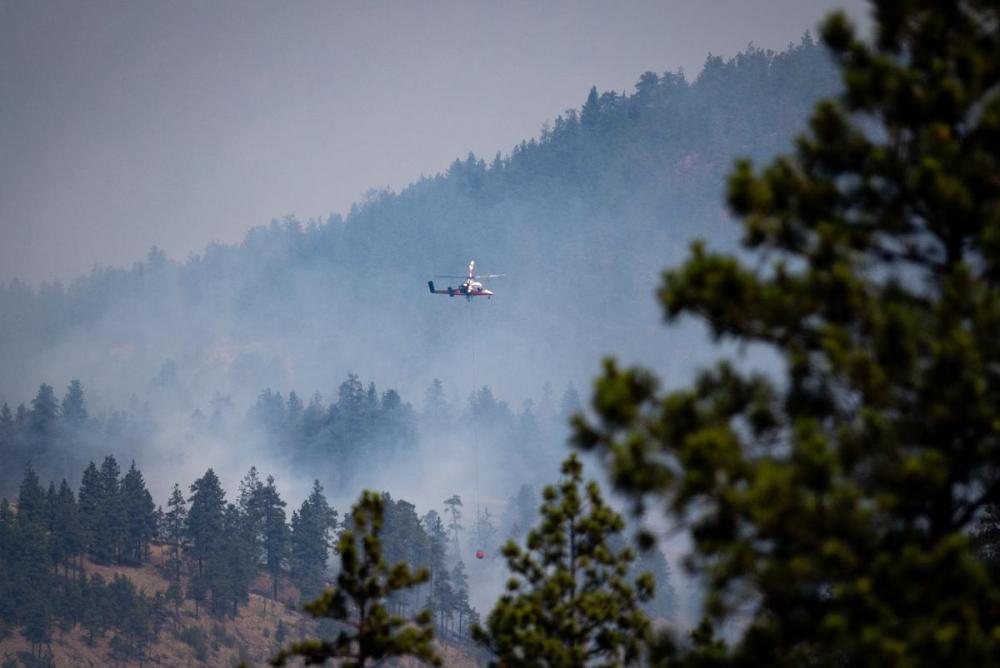Troubling UN climate change report predicts heat extremes with ‘high confidence’
Advertisement
Read this article for free:
or
Already have an account? Log in here »
To continue reading, please subscribe:
Monthly Digital Subscription
$1 per week for 24 weeks*
- Enjoy unlimited reading on winnipegfreepress.com
- Read the E-Edition, our digital replica newspaper
- Access News Break, our award-winning app
- Play interactive puzzles
*Billed as $4 plus GST every four weeks. Offer only available to new and qualified returning subscribers. Cancel any time.
Read unlimited articles for free today:
or
Already have an account? Log in here »
Hey there, time traveller!
This article was published 09/08/2021 (1303 days ago), so information in it may no longer be current.
From flooding in Toronto to the thawing permafrost in Canada’s Arctic to the erosion of Prince Edward Island’s shoreline, climate change is already leaving its mark.
Now, a troubling new report from the United Nations says that extreme weather will continue with the average global temperature increasing by 1.5 degrees between 2030 and 2050 if current greenhouse gas emissions continue.
Released this week, the UN’s Intergovernmental Panel on Climate Change predicted heat extremes in most of the world’s inhabited regions with “high confidence.”

“The story really hasn’t changed much,” said Kent Moore, a University of Toronto climate scientist and physics professor. “I think what’s new is the degree of confidence that we have now. The evidence is getting overwhelming. We are seeing these dramatic changes, like the heat waves in the west, the wildfires.”
Released this week, the UN science assessment body concluded “it is unequivocal that human influence has warmed the atmosphere, ocean and land,” calling the scale of recent changes “unprecedented.”
The report said that unless there are deep reductions in carbon dioxide and other greenhouse gas emissions, the global surface temperatures will rise.
The report predicted that climate-related risks to “health, livelihoods, food security, water supply, human security, and economic growth” are projected to increase with global warming of 1.5 C and would further intensify at 2 C.
The ongoing assessments are meant to influence government policy, to decrease greenhouse gas emissions and limit the global impact of rising temperatures.
In Canada, the effect of climate change is already apparent across the country and is expected to get worse.
In the west, extreme heat has once again sparked sweeping forest fires, while northwestern Ontario, including Red Lake and Kenora Regions, has battled intense blazes as well.
In the Arctic, the permafrost is thawing, threatening housing and roads in some communities, while also releasing more carbon emissions into the atmosphere.
Wild rains flood Toronto streets and basements when old sewers can’t handle the surge of stormwater. And in eastern Canada, the loss of protective sea ice and rise in ocean water levels is leading to shoreline erosion, particularly in Prince Edward Island.
In some locations around PEI, as much as five metres of land is lost each year, said Adam Fenech, director of the University of PEI Climate Change Lab. Fenech and his team have documented 1,000 homes and cottages are at risk and 17 lighthouses that are vulnerable to coastal erosion which, he said, need to be moved before they “fall into the ocean.”
The IPCC report gives the latest scientific assessment although climatologists have been watching “some pretty crazy things” related to the environment, Fenech said.
“We are seeing the climate have severe impacts on our daily lives and I am a little surprised at the frequency of the events,” Fenech said.
“Expect more of the same, but worse.”
Canadian senator Rosa Galvez, with a doctorate in environmental engineering, specializes in issues related to infrastructure and climate change impacts, such as urban flooding.
“Climate change is here and it’s real,” said Galvez, who is a senator for Quebec. “We have to mitigate greenhouse gasses because otherwise it will get even worse and we have to adapt our buildings and residences.”
Canada needs to modernize its infrastructure with, among other changes, the use of permeable asphalt that allows water to sink into the ground, Galvez said. Her office produced a white paper on the need to modernize building codes for climate change. It makes numerous recommendations including the need for green infrastructure standards through “vegetation, soils, and natural processes to manage water and mitigate the impacts of urban flooding, drought, and coastal damage.”
The paper also highlights the vulnerability of communities in Canada’s north, where permafrost is often the foundation of buildings and roadways.
Antoni Lewkowicz, a professor of geography and environment at the University of Ottawa, said the thawing of permafrost impacts the Inuit and First Nations residents, since temperatures in the north are rising faster than many other regions.
Lewkowicz said some communities can adapt by building new roads and housing, but nothing is mitigating the underlying problem — warming temperatures that lead to the bacterial breakdown of permafrost that releases carbons.
“The thing that we know would work is — don’t emit greenhouse gasses,” he said. “The answer is, don’t buy your next vehicle as a large gas-guzzling pickup truck.”


